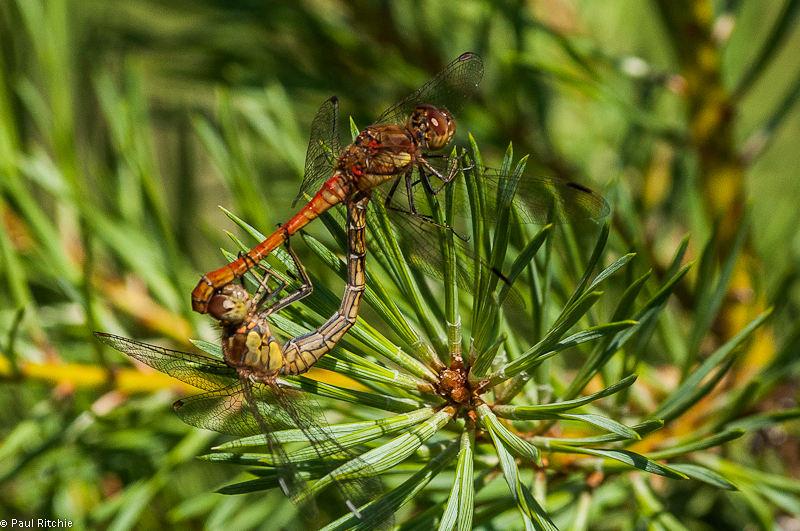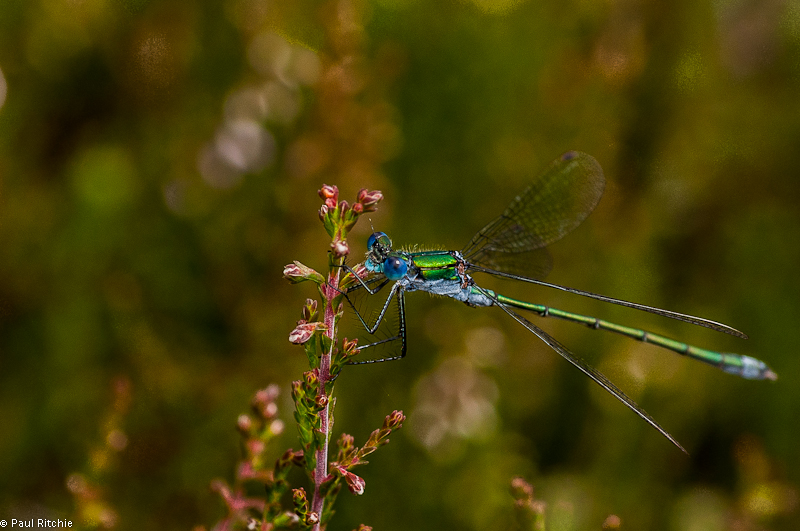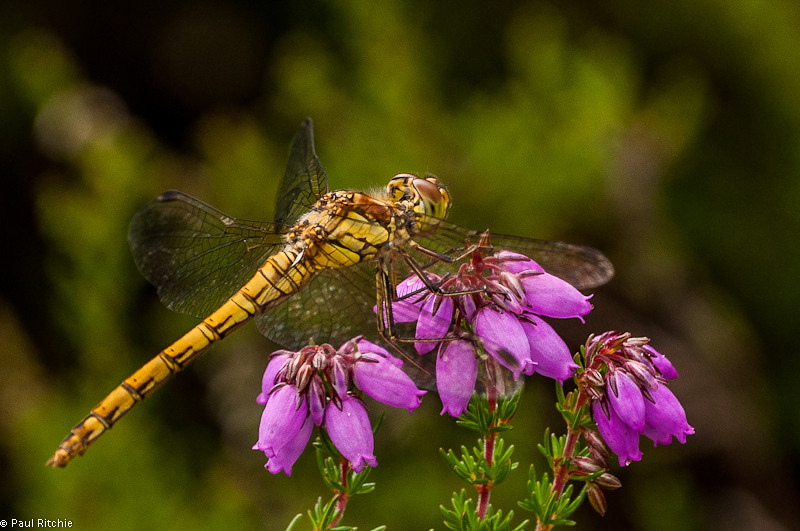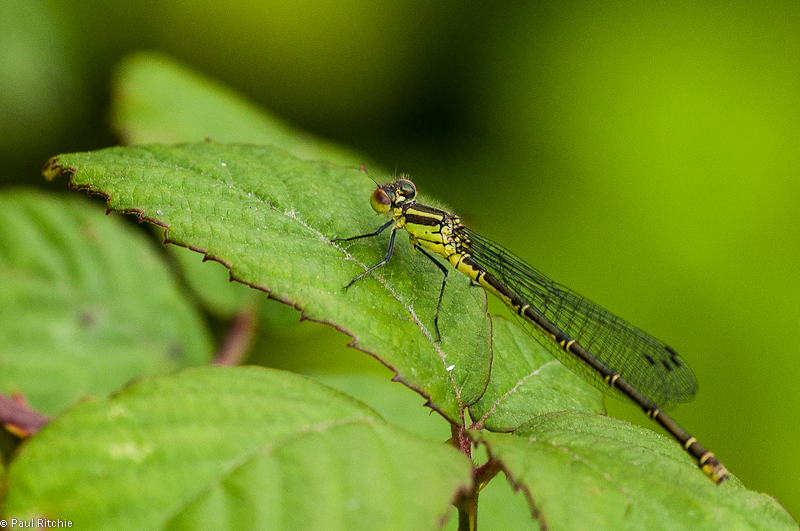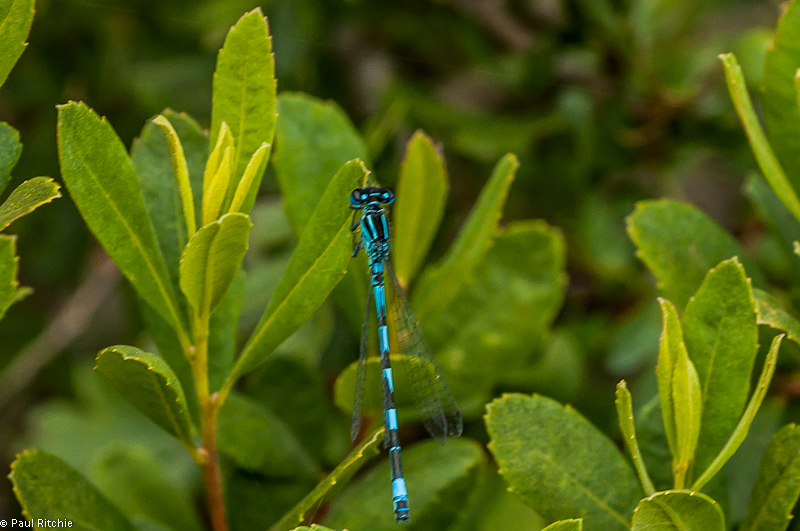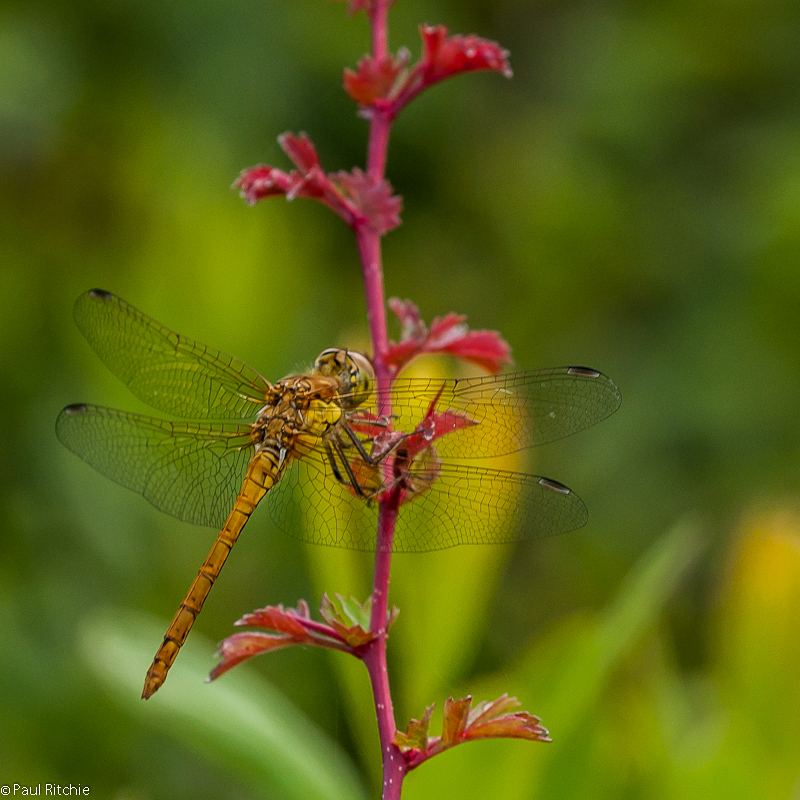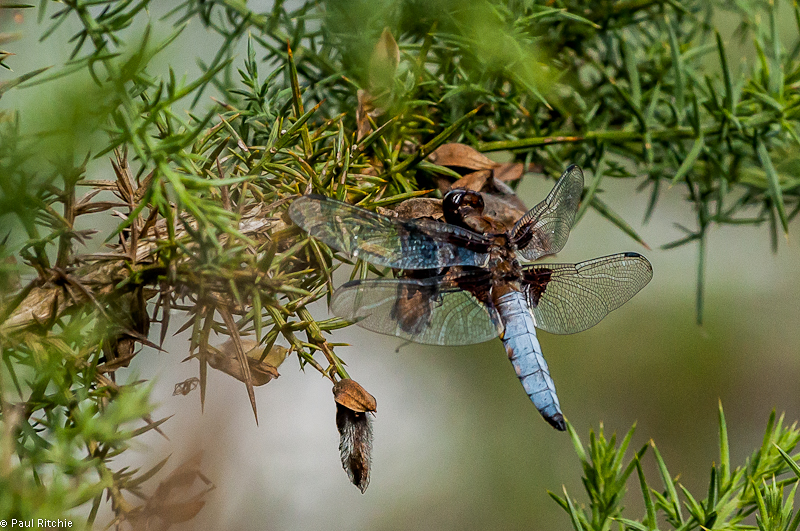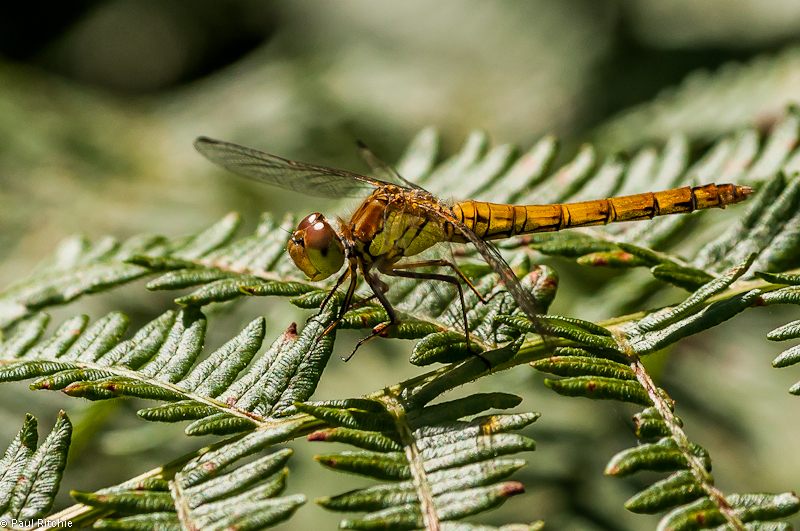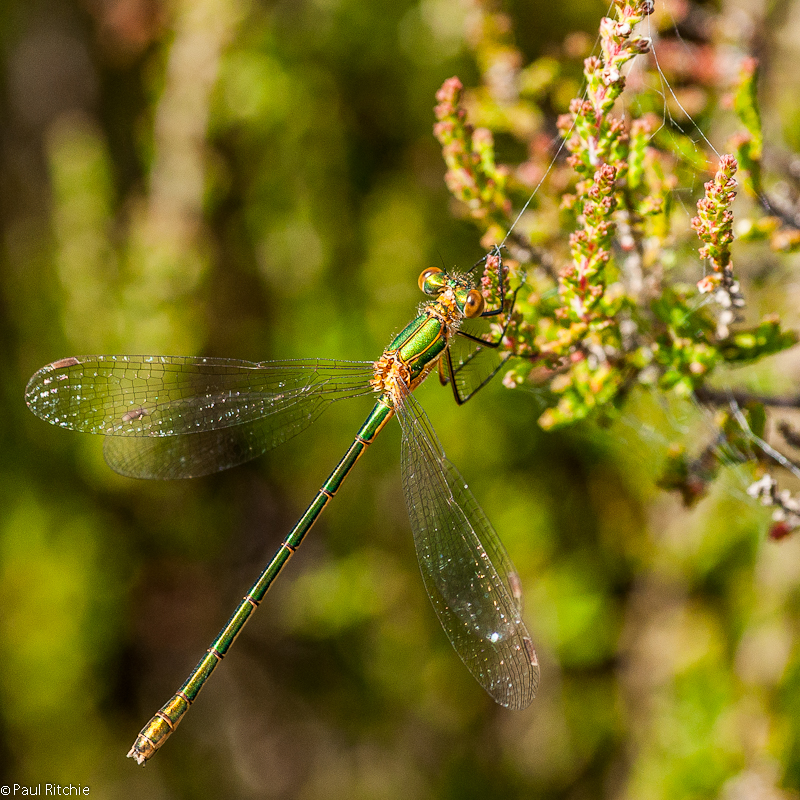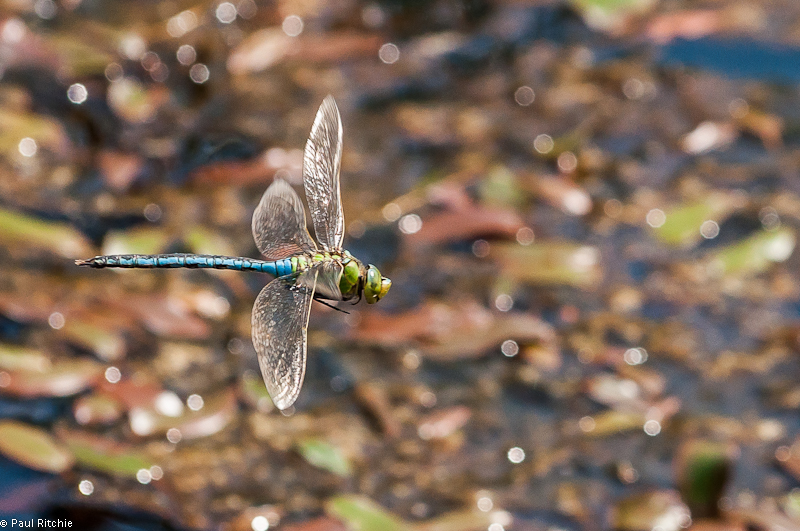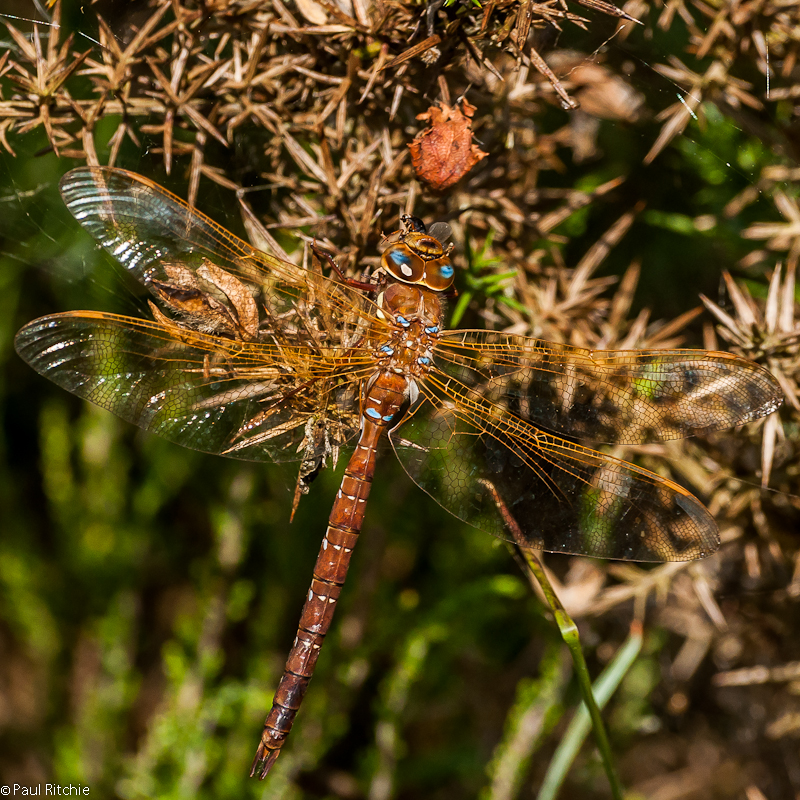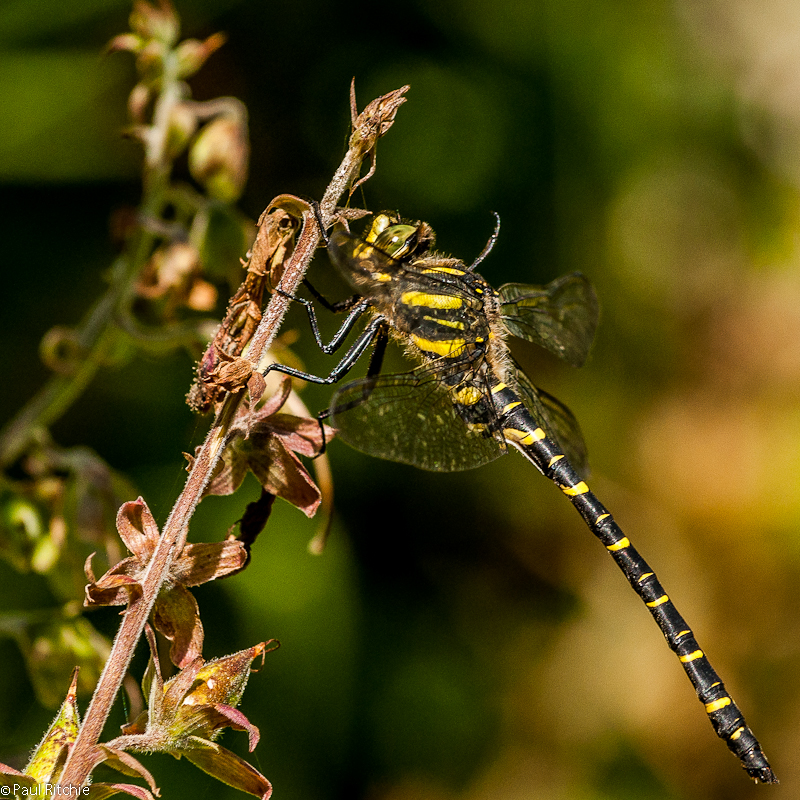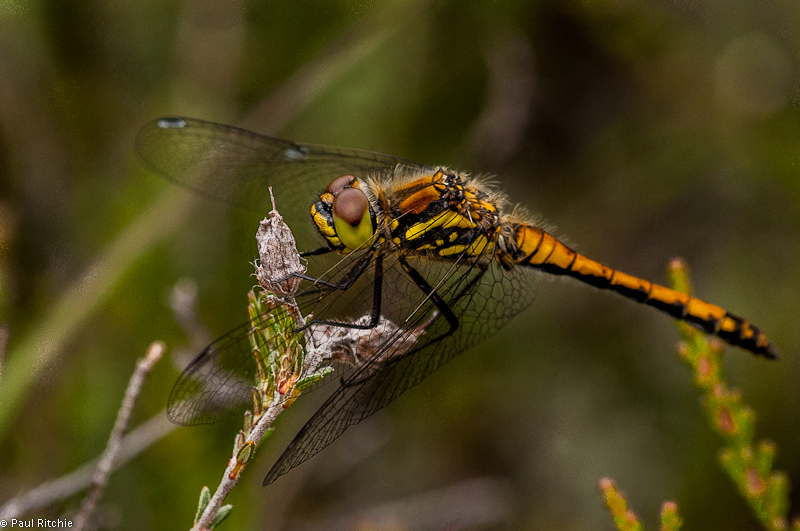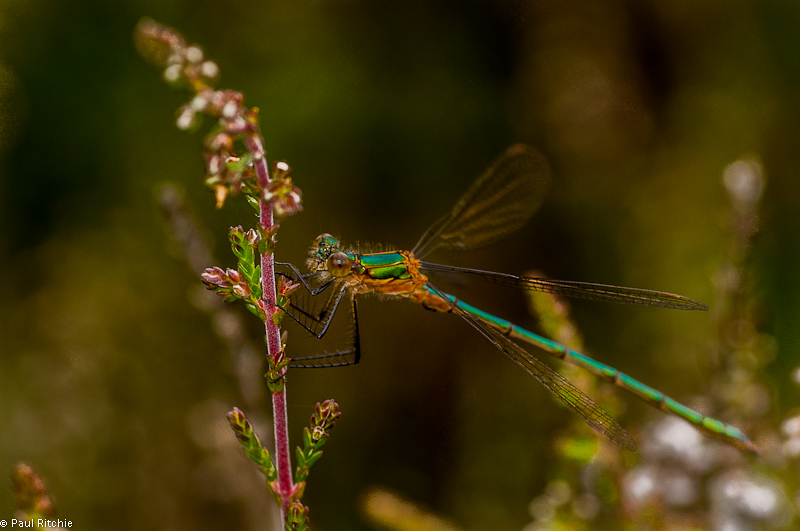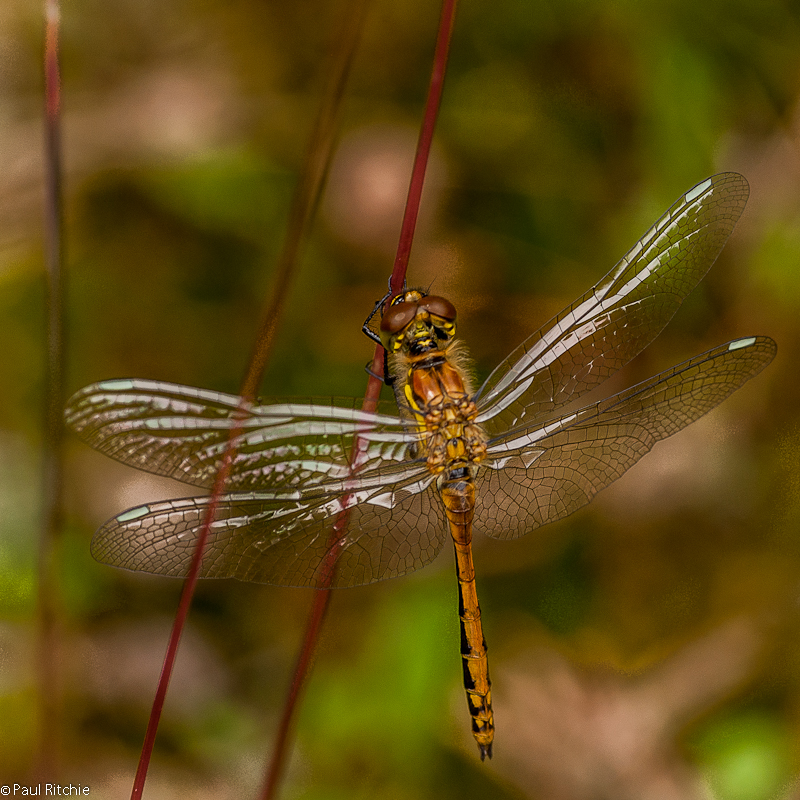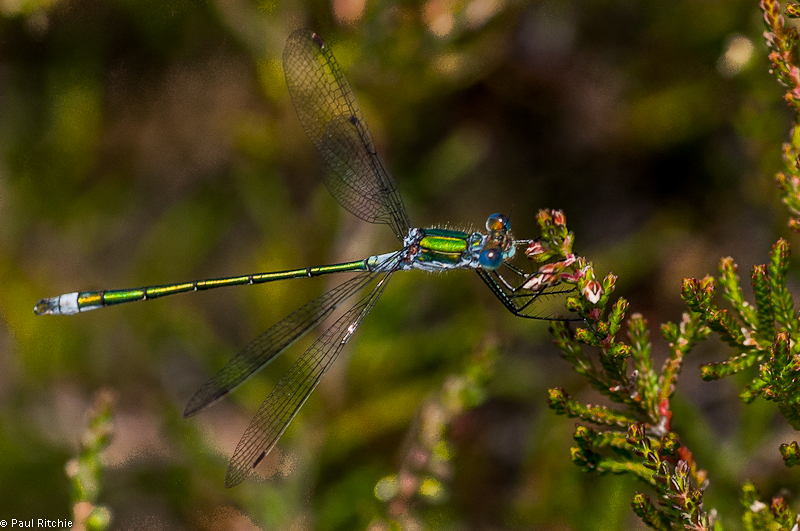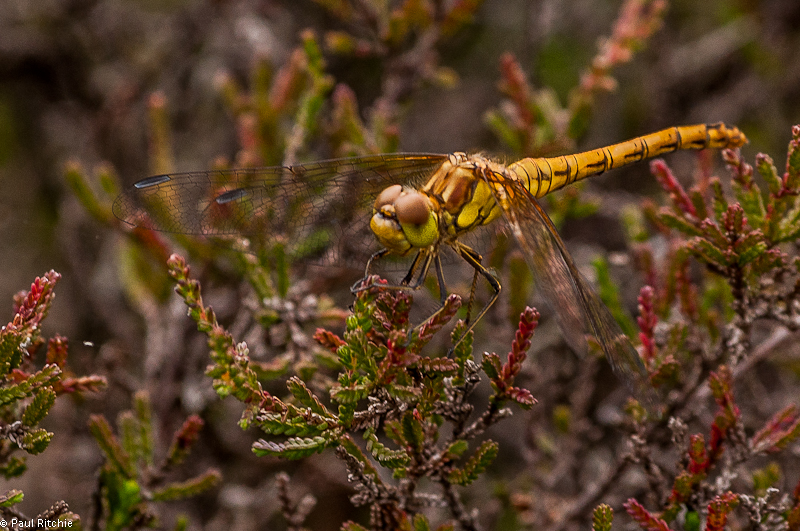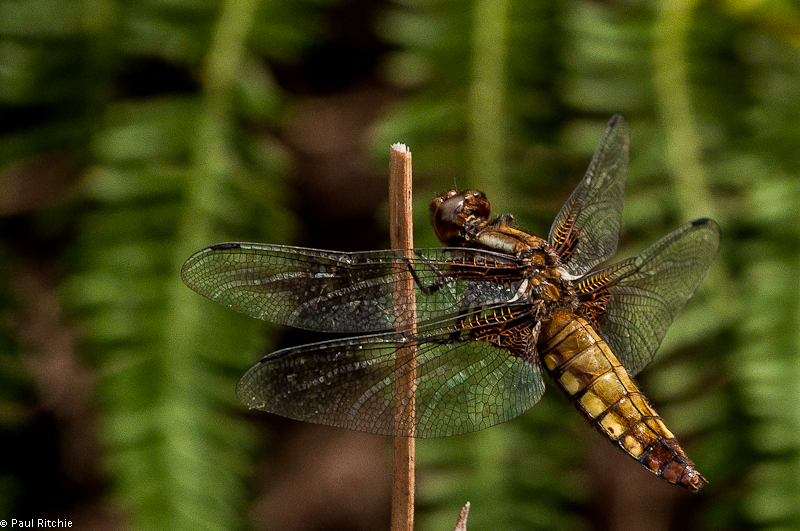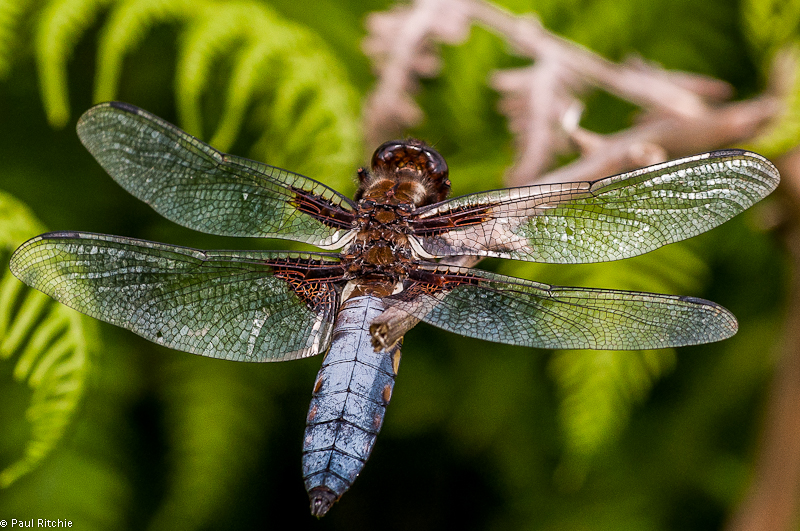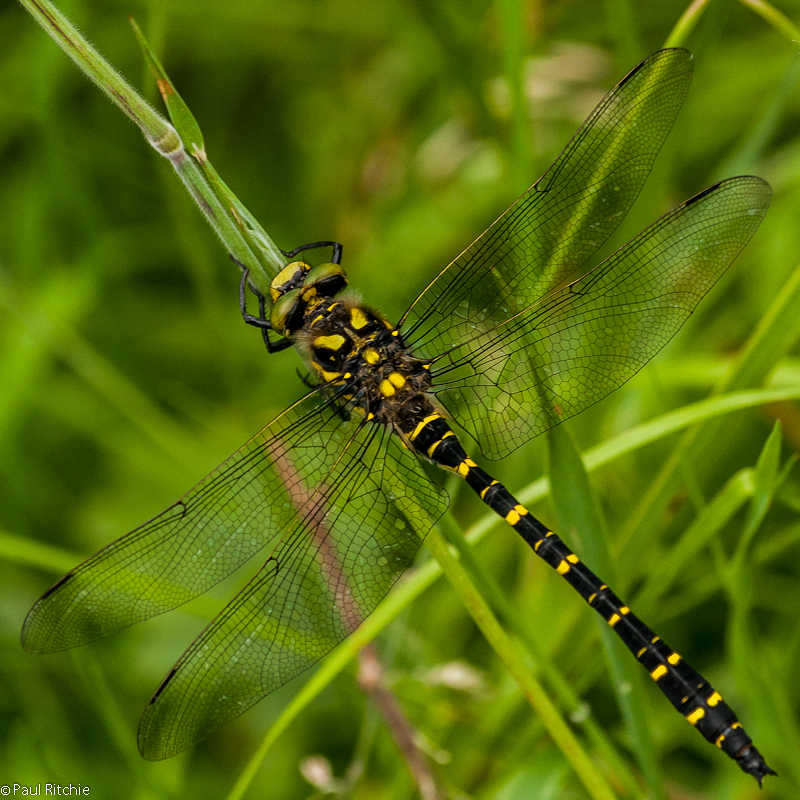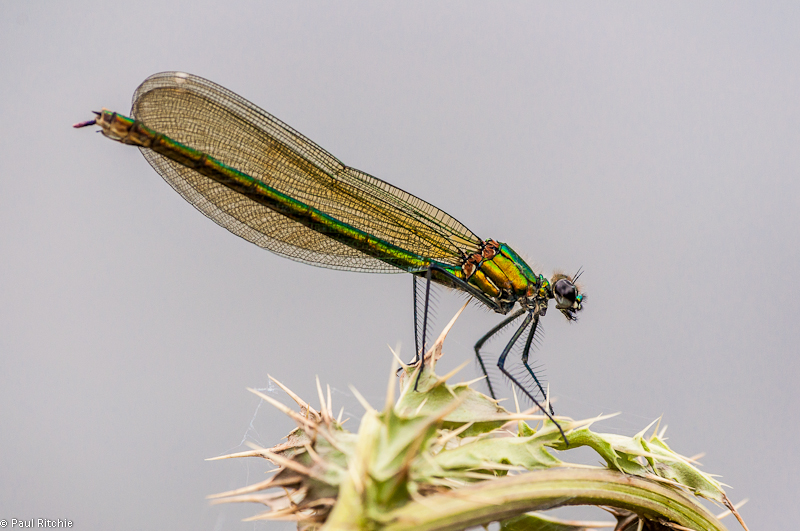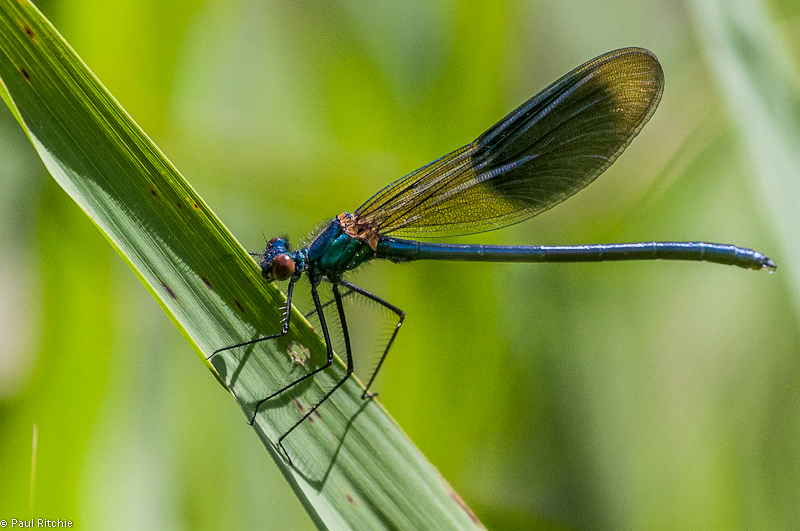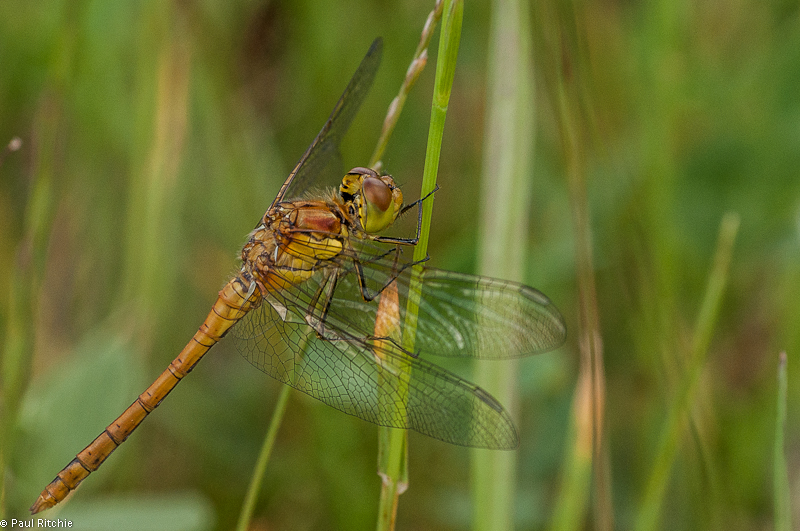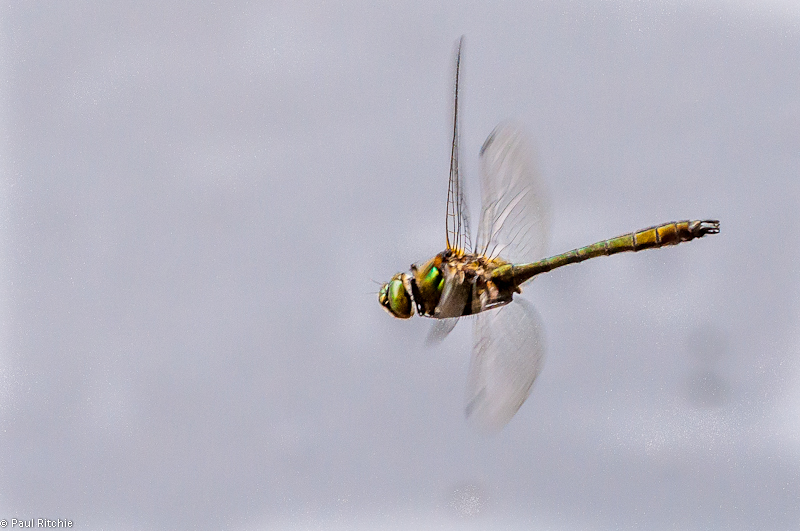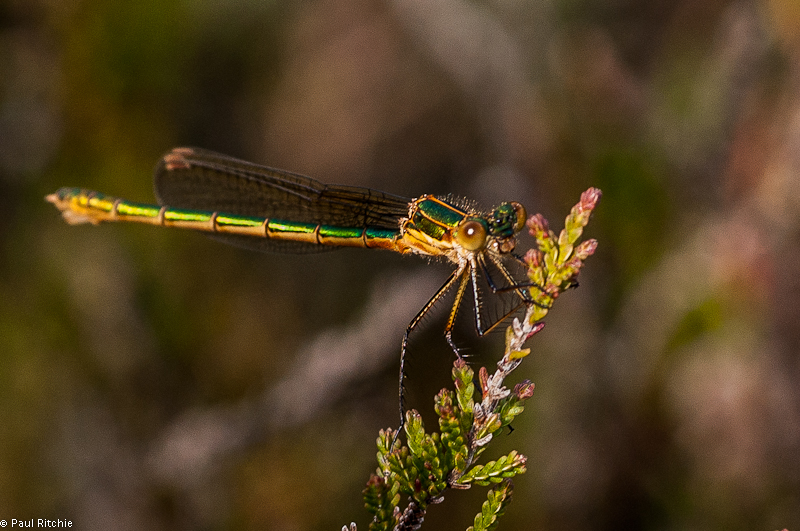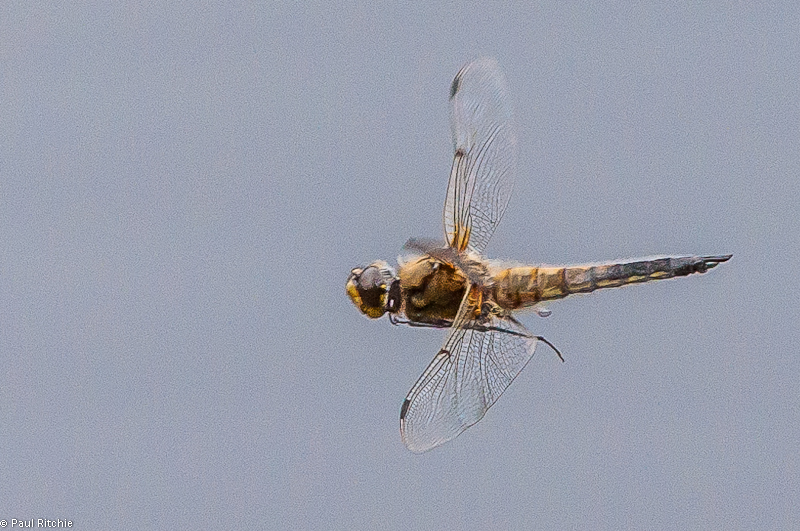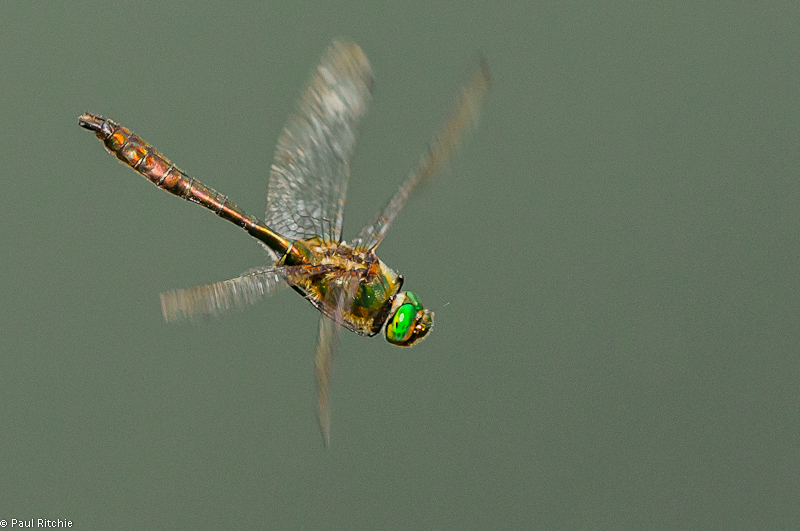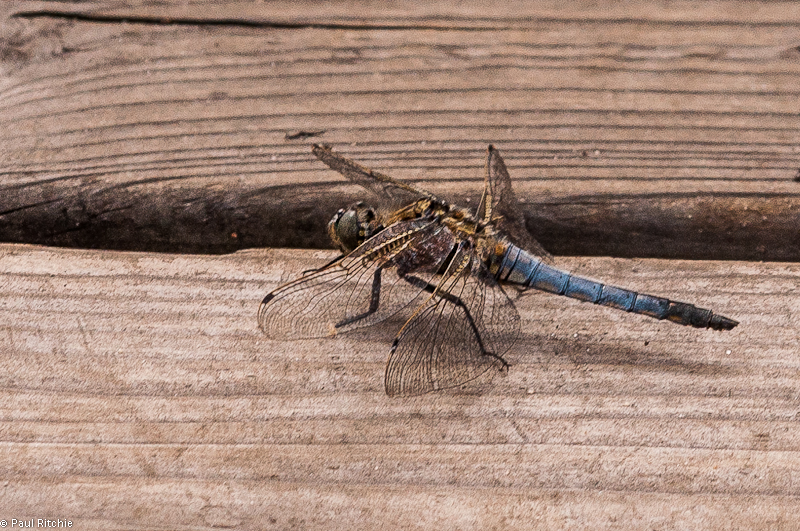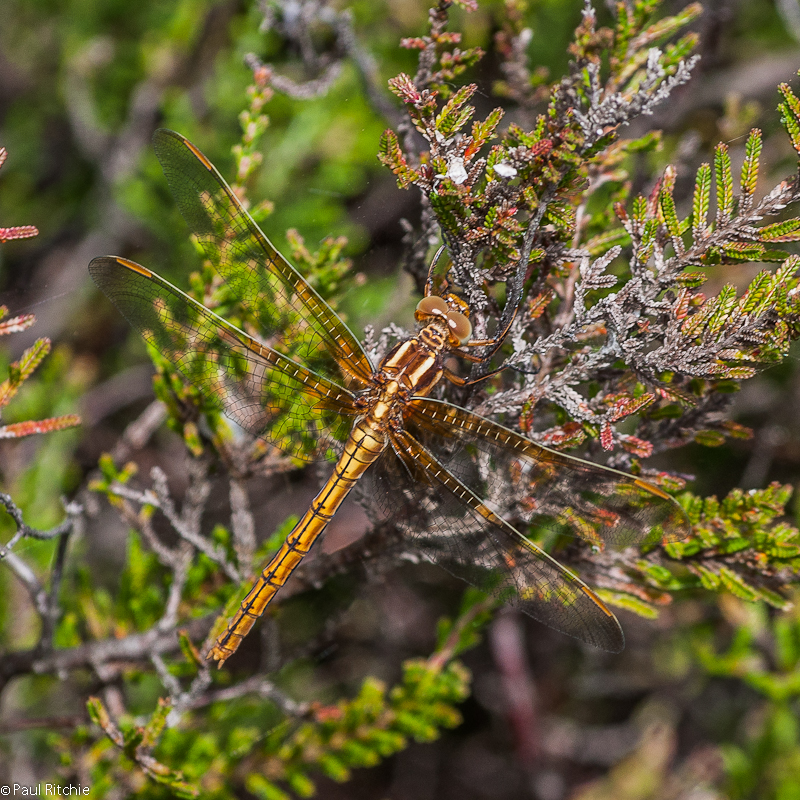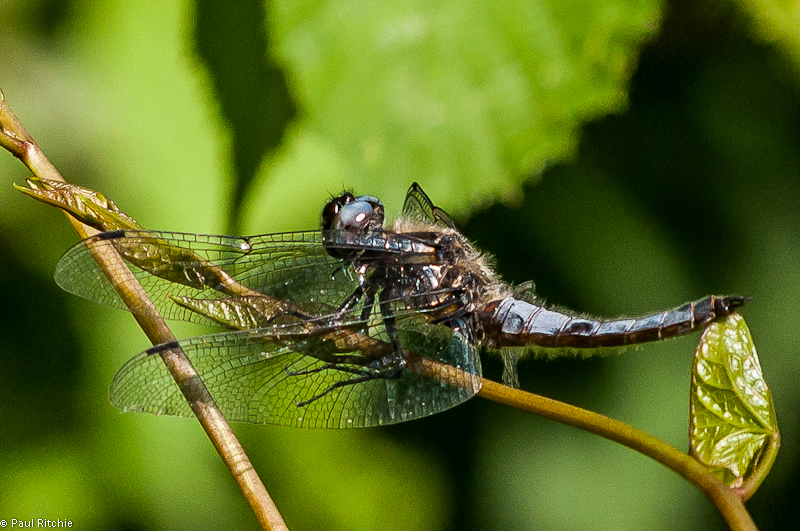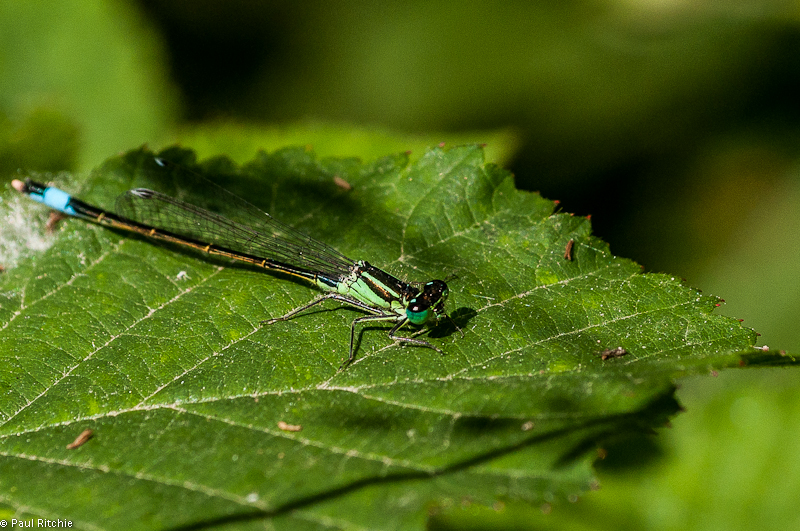It’s been months since we’ve seen some decent sun, and it’s been months since Doug & I shared a day out, His work commitments abroad has meant he’s missed out the most of the season. poor as it has been.
I started the day at the pond waking up a few Common Darters and Broad -bodied Chasers from the gorse.

Over the water were a couple of tired Four-spotted Chasers and briefly one female Southern Hawker among the few Azures.
But I had a day planned elsewhere, so I met Doug at Linwood to hopefully flush out a few Brown Hawkers. We weren’t disappointed. Among the ferns were at least half-a-dozen along with a few Golden-ringed.

Common Darters were in reasonable numbers, and at the pond an Emperor was patrolling, but otherwise only a few Common Blue damsels and Keeled Skimmers.
We were after larger prey, and back towards the ferns we had our first real chance when a female Brown Hawker dropped down behind a gorse bush.
Knowing the rough location helped, and it wasn’t long before Doug spotted her hidden deep in a shaded hole. You would never spot her if you were just passing.

Back in the ferns we saw several more fly up & away and while Doug was flushing, I occupied myself with another – or possibly the same – Golden-ringed.
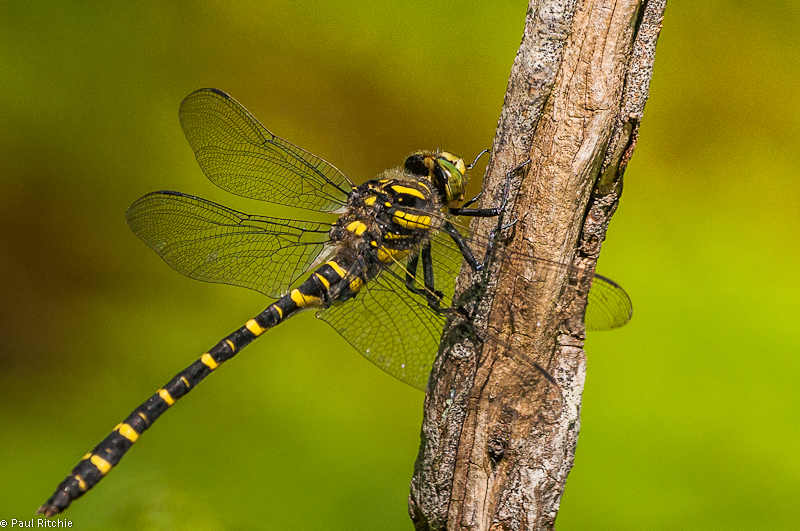
While I was grabbing this shot, one of Doug’s flushes flew right in front of me and landed very low in shaded dead fern underneath a gorse bush. A nightmare of a position for a photograph, but an opportunity all the same.
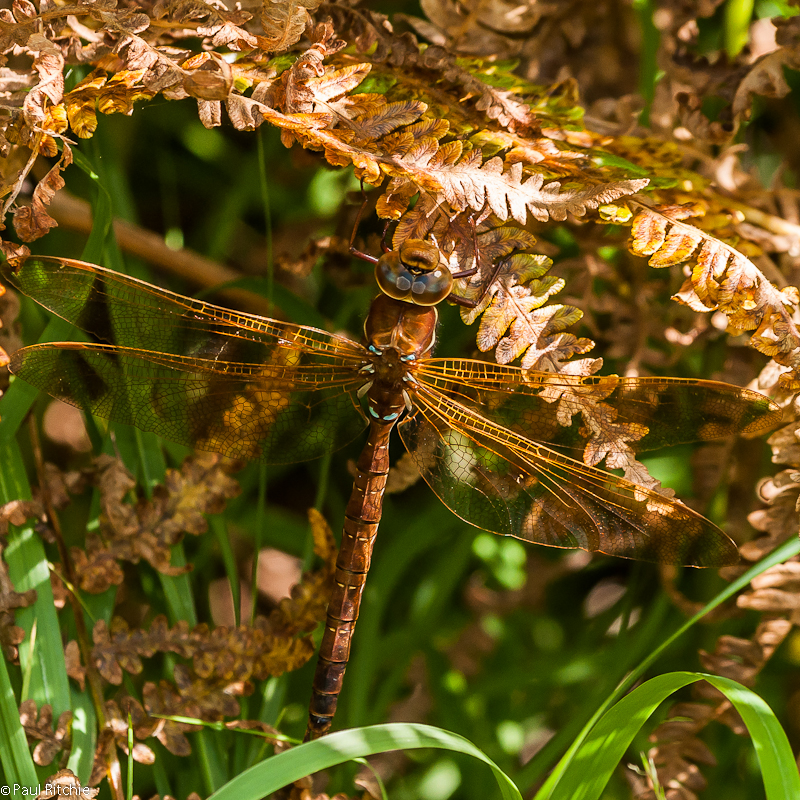
Result then, and a great start to the day.
We moved on to Christchurch Common and just before the main pond area we had our first Southern Hawkers patrolling the old railway.
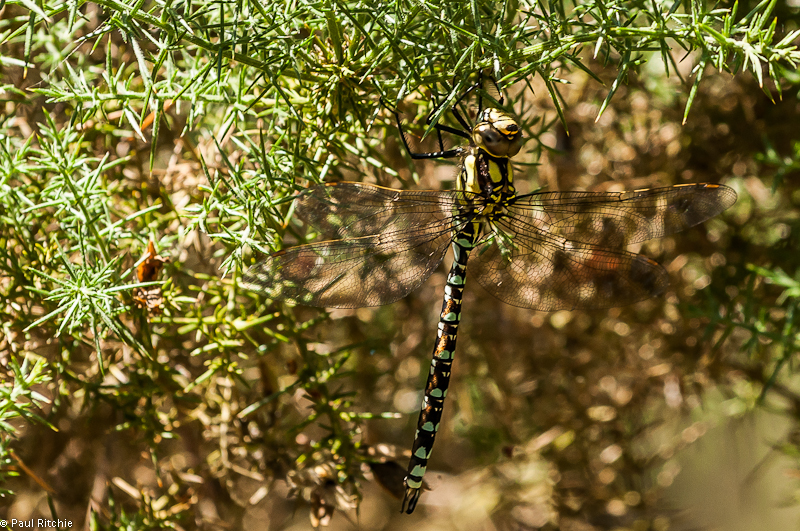
Everyone we saw perched at completely the wrong angle to the sun.

We spent some time with the Black Darters and Emeralds, Doug getting frustrated with the former while trying to get some video of the males.

Further around the path we came across another female Southern Hawker who chose another lousy perch!
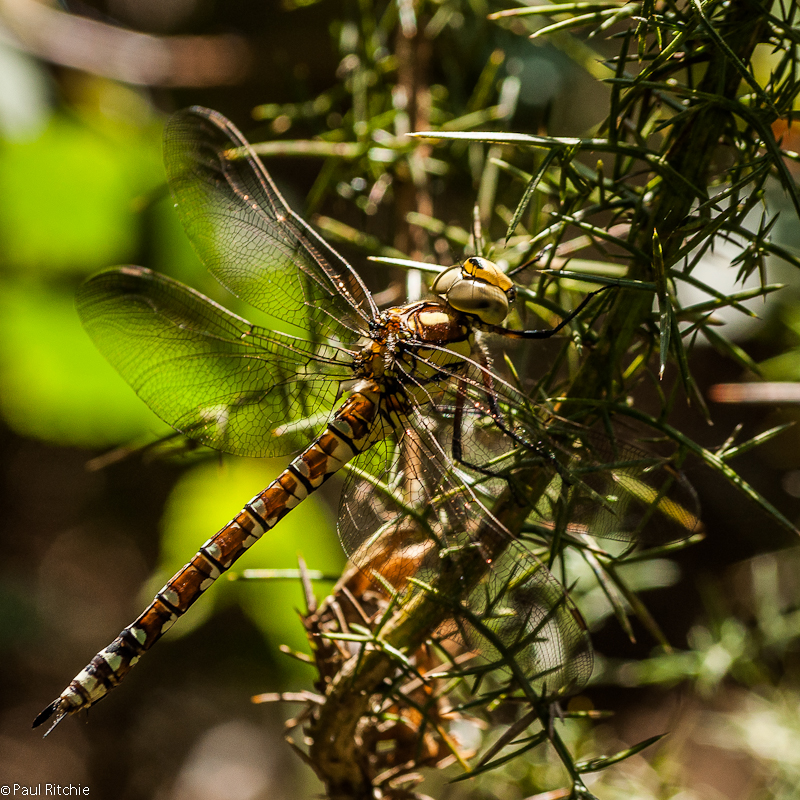
By now we were tiring – mostly due to our Brown Hawker flushing earlier – but decided to give Troublefield a look in. Just inside the gate was a male Southern Hawker patrolling the treeline, but no more. Only a few Banded Demoiselles.
A quick foray around Ramsdown threw up more Black Darters, Emerald Damsels, Four-spotted Chasers and a couple of flighty Golden-ringed, none offering a golden opportunity.
I had a busy day planned for Wednesday, so on Tuesday I decided to treat myself to a few hours at the pond. Arriving at midday, 3 hours later than yesterday, the morning sun had already raised the temperature to provide a satisfying display across the water.
Battling for territory were Broad-bodied and Four-spotted Chasers – more than I’ve seen for a good while. Joining these were Keeled Skimmers and Common Darters, Azure, Common Blue, Blue-tailed and the first Emerald Damselflies I’ve seen here this season.
Among the gorse were more Common Darters and a single female Southern Hawker circling several times before disappearing out of sight. I did manage a rather continentally-posed Common Darter though
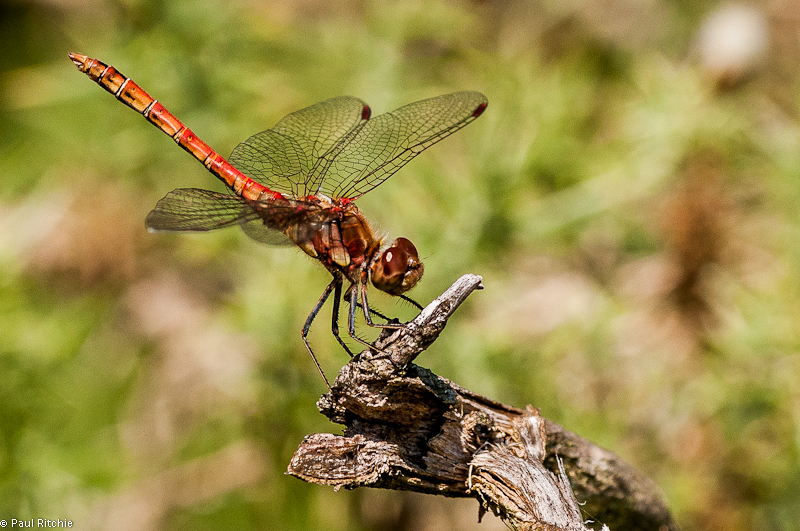
Besides the superb aerial battles between the chasers, a couple of male Emperors were holding court at each end of the pond. On a couple of occasions they would stray into each others territory and rise in a violent clatter of wings.
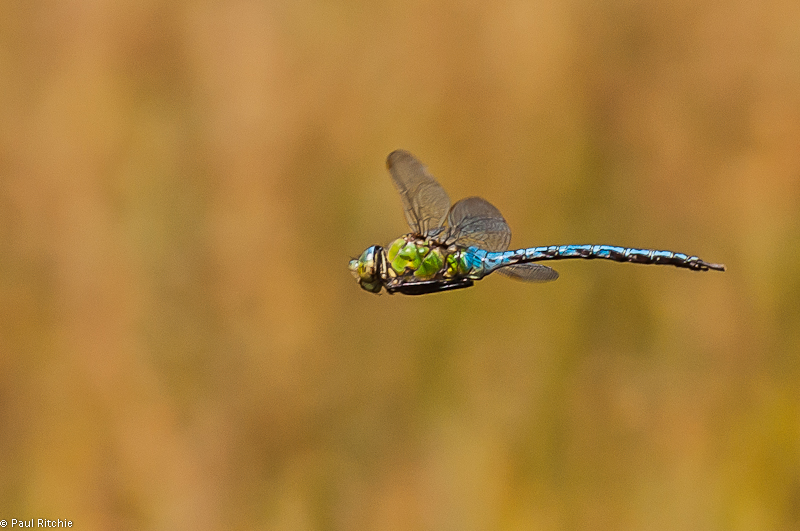
No other hawkers appeared during my stay, but a real pleasure to see this pond so alive after the disappointments of the past month.
On Wednesday Sue & I had arranged to meet with (Naturalist) Stephen Moss on a glorious summer’s day to hopefully find him some Scarce Blue-tailed and Small Red-eyed Damselflies.
We met just after 10.00am at The Royal Oak in North Gorley before trundling through the maze of lanes to Ogdens.
The walk along the stream threw up a few Keeled Skimmers and Broad-bodied Chasers, some Common Blue, Large and Small Red Damselflies.
On arrival at the site we caught our first glimpse of a male SBT at the crossing point, and several more in the main pool.

Further searching and higher temperatures brought out more along the sub-pools & channels, and a female ovipositing at the base of a plant stem.

Keeled Skimmers were plentiful with several pairs in cop, and plenty more Small Reds. Surprisingly didn’t see any Southerns, but we weren’t really looking for them.
After we had our fill we walked back along the stream, visiting a few more channels, inlets and ponds. Pleased to see the SBT’s had spread out quite nicely with several more sightings, along with regular Blue-tailed. At the pond we had a Four-spotted Chaser and a reasonable amount of Emerald Damselflies.
Back on the stream we finally saw some Beautiful Demoiselles, but only a few males. Very poor, however it wasn’t long before we spied our first Golden-ringed, shortly followed by another.
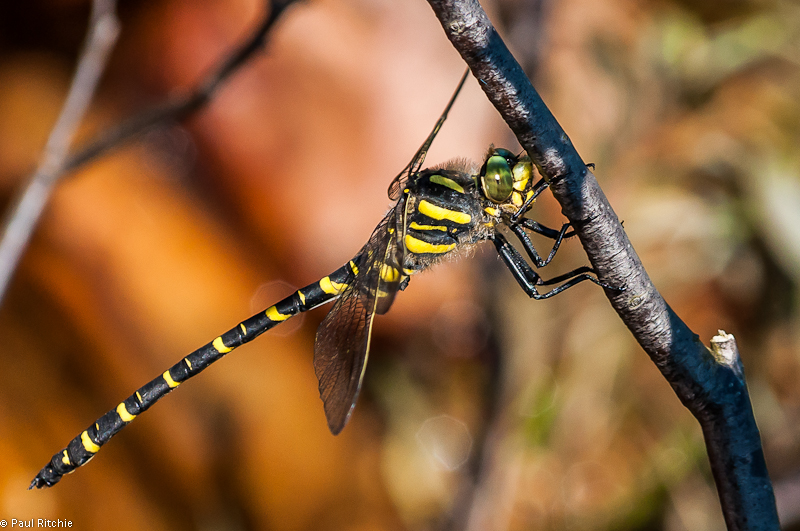
We returned to The Royal Oak for a lunch stop, and while sat in the front garden another Golden-ringed flew through the tables twice following the small stream running underneath us.
Cider, Sandwich and 2 fly-bys of probably our most impressive dragonfly in a pub garden? Lunch doesn’t really get any better than this!
Next stop Pennington – the only reliable site I know for Small Red-eyed, and, even though I found a fresh female a week ago, I still felt a little apprehensive knowing that the pond hadn’t really shown any activity since before the flooding.
I needn’t have worried as at the pontoons there were several males patrolling the water. An Emperor was navigating the far bank, and Blue-tailed, Azure and Large Red were also making the most of the sunshine.
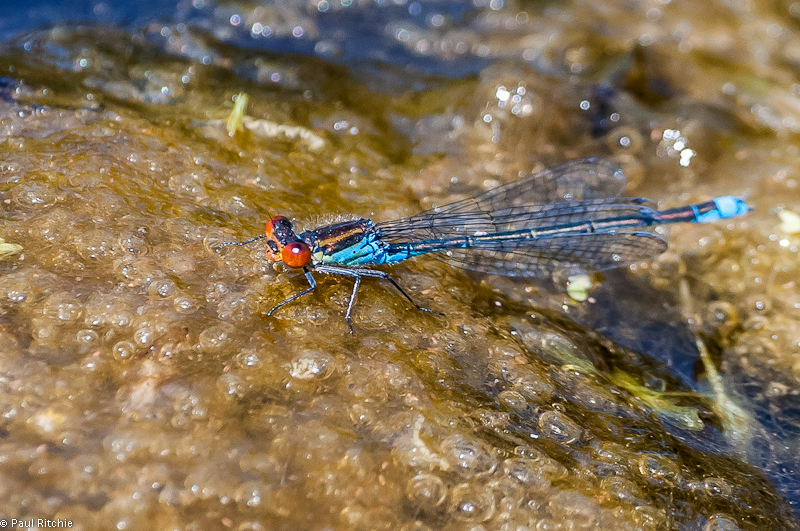
At the other end of the pond the only larger species were another Emperor and a few Common Darters. Luckily there were several more Small Red-eyed including several pairs in tandem.
My only disappointments were missing 2 perched male Emperor opportunities, A lack of stealth no doubt influenced by that lunchtime Cider, and no sign of any Southern or an early Migrant Hawker.
No worries – in a month there will be several opportunities.
Thursday was another cracking day with glorious skies, if a slightly stronger breeze than recently. Sue & I decided to spend a few hours at Crockford.
As soon as we reached the stream we had a couple of patrolling male Golden-ringed, a scattering of Southern Damselflies, Common Darters rising from the foliage and Keeled Skimmers decorating the clearing.
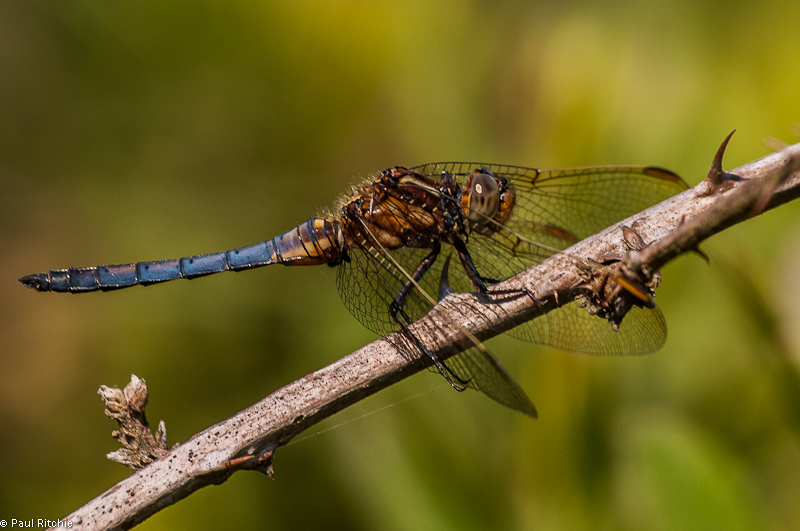
We followed the treeline uphill to the right before dropping down to the main basin where we set up camp for the rest of our visit.
Two more male Golden-ringed were holding territories along the basin, occasionally meeting for a brief battle.
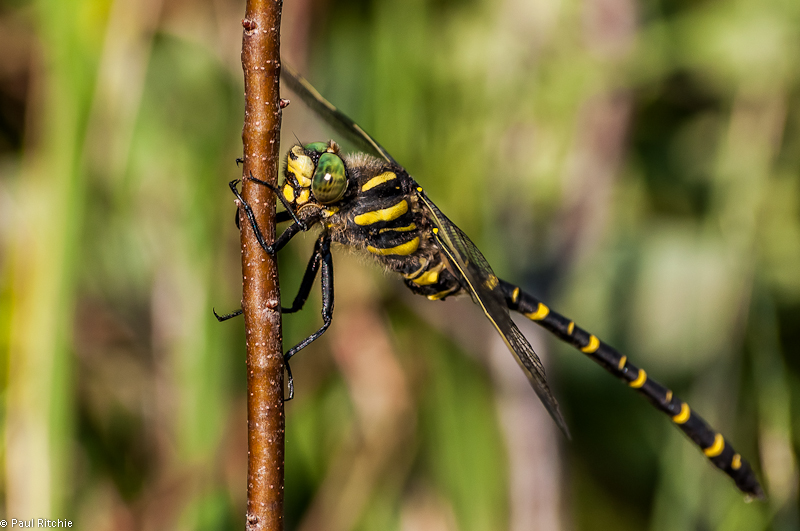
Beautiful Demoiselles were cascading around and above the Bog Myrtle, and a few more Southerns were pairing and ovipositing in the shallows.
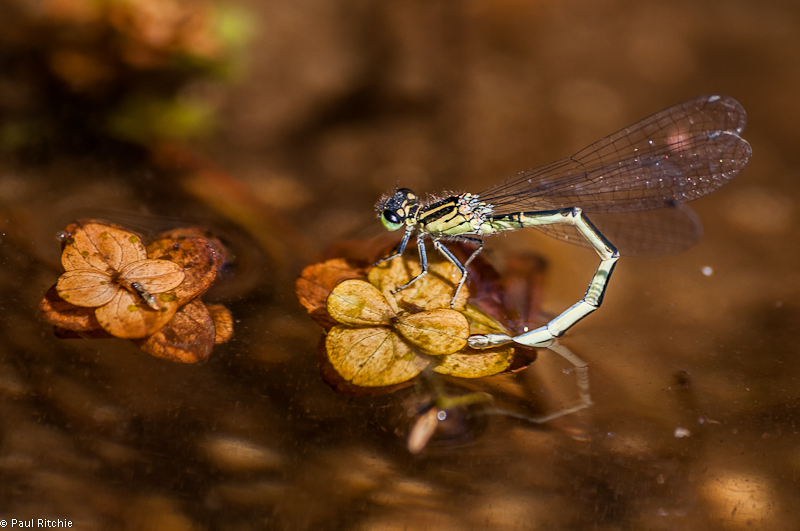
At the larger stream pond a small thicket of Bog Myrtle appeared to contain the main population of Small Reds.
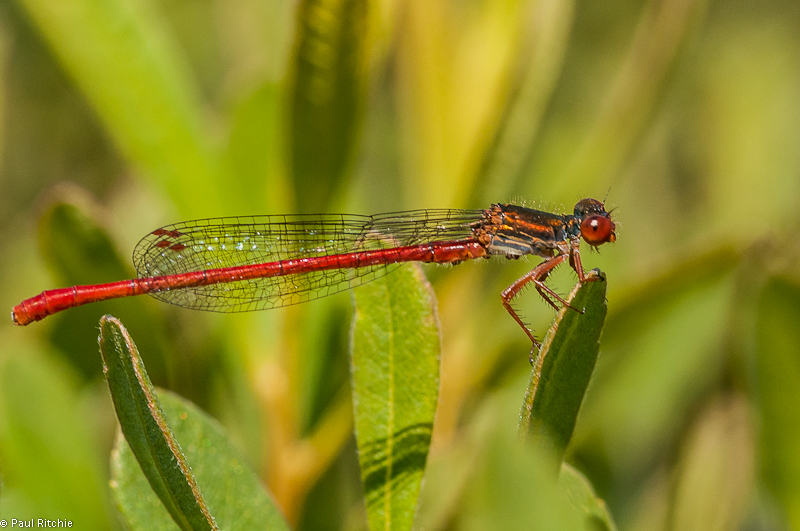
A little further along another population of Southerns were busy around another thicket.

Back at the pond a female Emperor appeared from upstream and chose the emerging bank-side vegetation to oviposit, allowing my closest opportunity yet to photograph this beautiful beast in action.
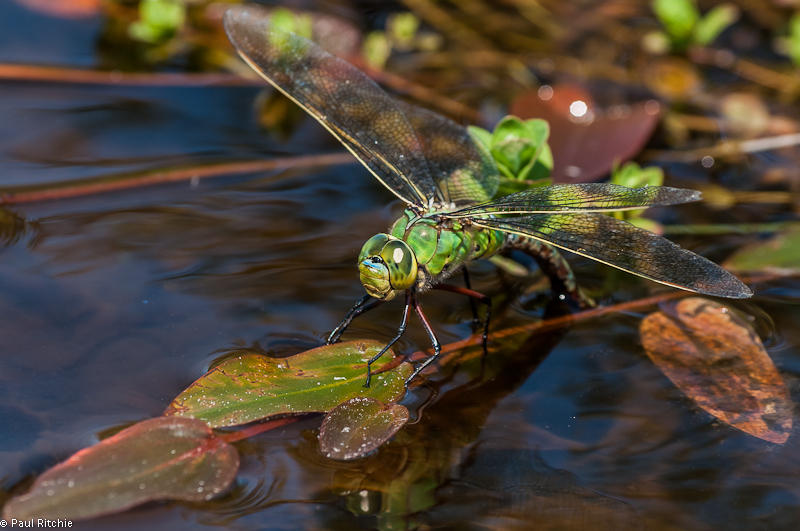
We didn’t stray too far upstream on this visit, partly to do with the wind but mostly to do with the still saturated ground. Regardless in this small stretch we encountered at least another half-a-dozen male Golden-ringed.
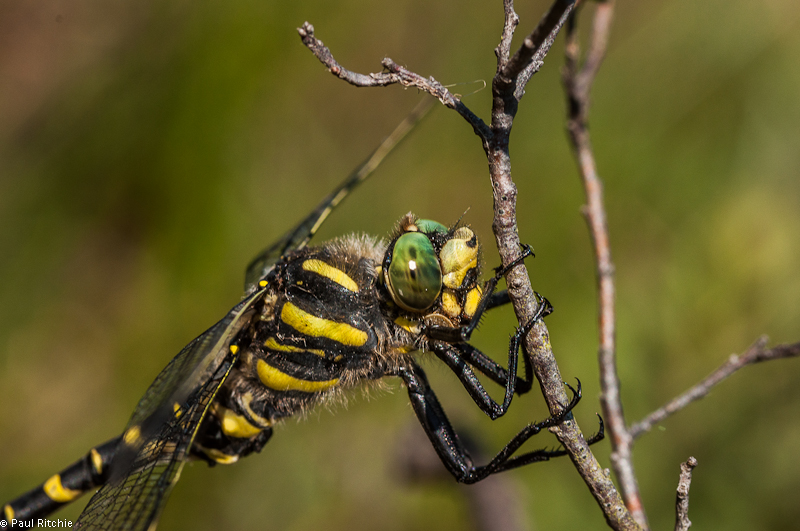
Crockford Stream is the Ben Nevis of New Forest dragonfly locations and can suffer from its own celebratory, usually by seasoned and experienced enthusiasts complacent through too many disappointing visits.
My best day here was in the first year of my interest, and such was the diversity that to a hungry newbie was simply heaven. Since then I’ve had many a disappointing day there, but occasionally the treasures encountered on the right day make you realise how fantastic a place this can be.
Last season it was the beginning of August, where a full reccie up & downstream provided more than enough entertainment. Today was another example of a great day to be had at Crockford.
On Friday I paid a brief visit to the pond during the afternoon to witness a fairly decent bout of activity with 15 species observed, although the count was actually 17 all told. Not many photo opportunities other than another Emperor in-flighter.
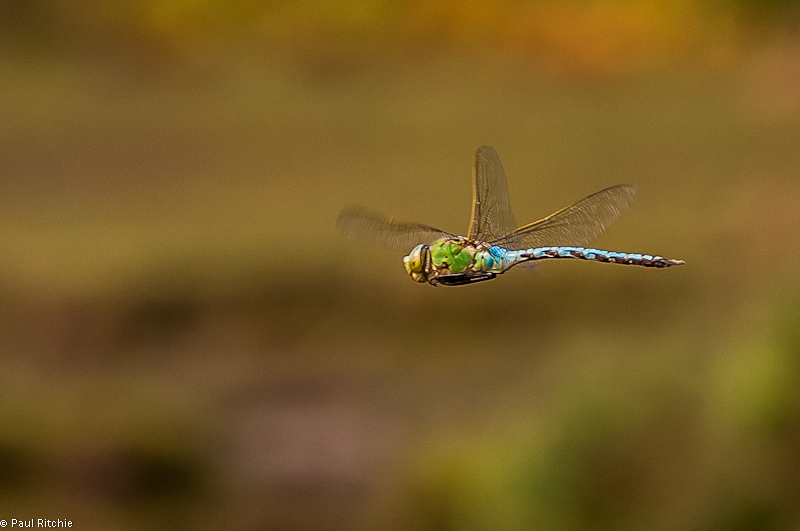
To end a fantastic week, Sue & I took a chance at Alners Gorse in Dorset for some rare Hairstreaks, but it turned out more of a dragonfly day with my first sighting this season of a Migrant Hawker, some Common Darters, Common Blue, Azure and even White-legged Damselflies and this female Emperor feeding on Gatekeepers
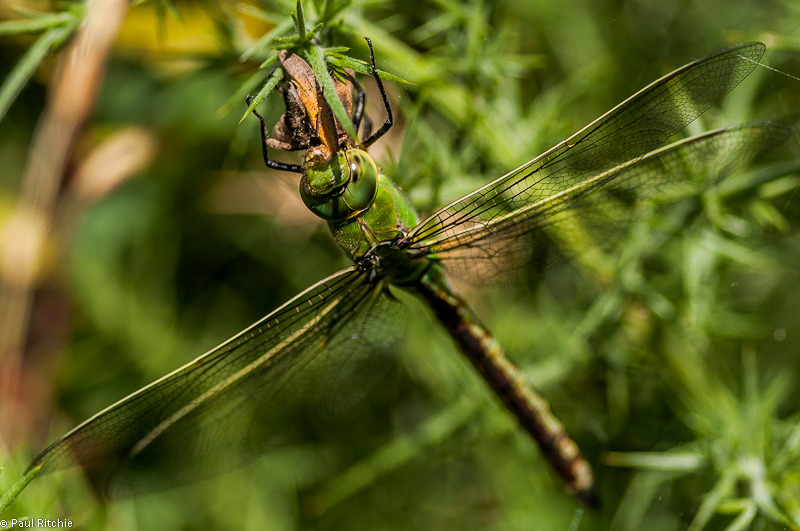
On the way back we stopped off at the River Stour for a brief glimpse of a Brown Hawker , some more White-legged and several Banded Demoiselles
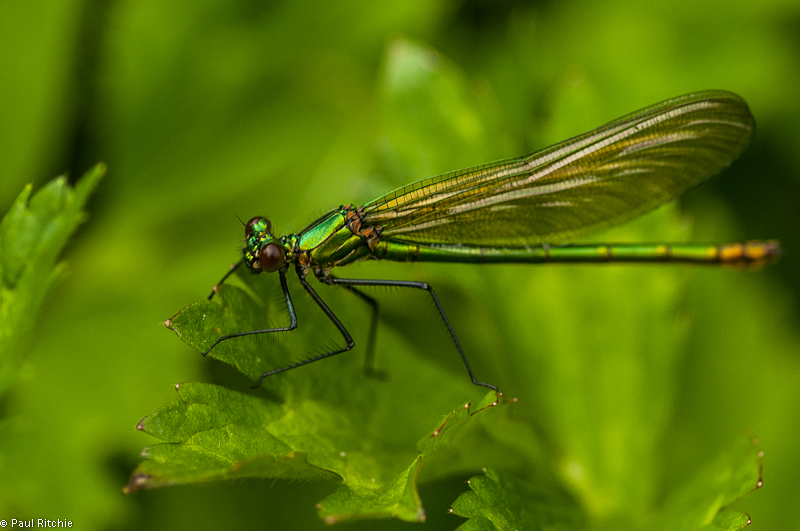
The majority of my time out in the field is usually spent alone, with Sue and/or with friends who share the same enthusiasm for dragonflies. A few times a year I receive e-mails requesting details of sites in the New Forest , and where they can find certain species.
I’m always happy to oblige and preferably meet up to share their experience. These days are always enjoyable and satisfying in a different way than grabbing a decent shot or finding a prize.
Different pairs of eyes can reveal far more than I usually see, and makes me appreciate the delights of a familiar species more than I would usually do.
Different minds can reveal more knowledge than books or websites, and I learn far more first-hand from these expeditions.

